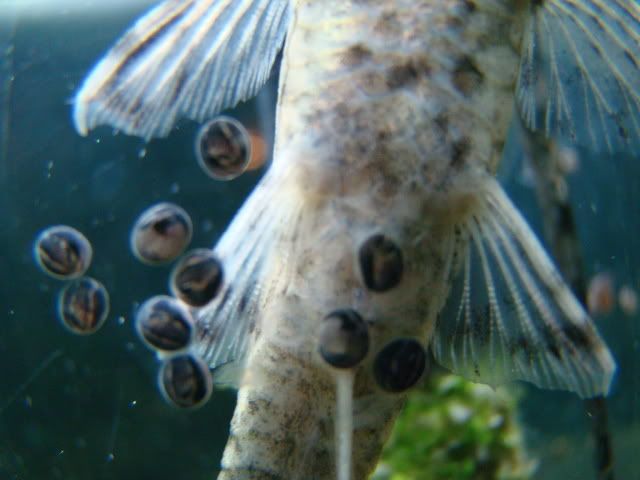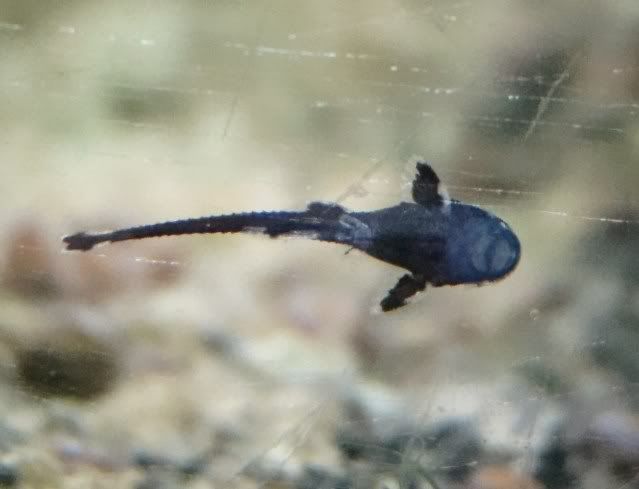Congratulations on your success in getting your Sturisoma to spawn.
I have raised a lot of Sturisoma aureum all the way to adult which breed regularly for me now.
I found that some of the methods many recommend did not square with my experience. I also have an experienced fish breeding friend from Venezuela who provided me with much useful information from his experiences collecting them in the field which helped shape my approach to keeping and especially raising their fry which was very helpful. Sturisoma are called "Policias" in Venezuela because they stiffly stand at attention on their spawning sites. He found them in the shallow riffles of smaller streams in water often no deeper than 12 inches. I began with wild caught fish. They are feeding on earth worm sticks which turn to mush within a few minutes of being placed in the food containers. I used the media bag for the most part. They suck the mushed food through the mesh of the bags.
Sturisoma fry will gather around their food from all over the tank. It just has to be a food they like/need. Here are a couple of poor photos I took of 5-7 day post hatch fry which were in a 35 gal tank. These photos prove that they will gather around their food. They need almost constant access to food.


I raise the fry on a diet of only Earth worm sticks and Spirulina Sticks. Sturisoma fry need a high protein diet and I consider feeding them garden vegetable to be unsuitable for their needs. Just gives them empty calories that they only eat because they are starving.
I found that if the fry are left in a large tank with water over 8 inches deep the majority will starve within a month.
The first few months are going to determine the growth and survival rates of the fry.
The fry need highly oxygenated water and a brisk current. I use a sponge filter with a power head attached to provide the current and filtration and an added air stone to help keep a high dissolved O2 level. Since the water is so shallow this means the filter must be laid on it's side and the water jet parallel to the bottom as if they were in a stream. I use the Azoo pedestal sponge filter that is comparable to the HydroSponge IV. The fry are well adapted to swift currents so while in the 10 gal tanks use a small power head on the sponge filter, one that is moving about 70-80 gph is about right. Always provide them with pieces of wood they can latch on to and hang in the currents. The wood should be shaped so there are some areas that are out of the direct current. I recommend keeping the fry in a couple 10 gal tanks with only 8 inches of water until they reach at least 2 inches. After that, I raise them in 20 Longs unitil they are about 3 inches. At that point, they are raised to adults in 16 inch high 40 gal breeder tanks.
I have some F1 pairs available but will need to save some spawns if I am to continue keeping them going. My groups spawn frequently so it is only a matter of taking the time. They are only about 18 months old so I figure I have plenty of time.
I continue to primarily feed the Sturisoma the foods they are started as their staple diet but as they grow they love frozen blood worms and live black worms.
Hope this helps. I arrived at a productive method of raising them only with some trial and errors along the way. Shallow water and high protein foods are very important lessons I learned about raising them.
Once they reach 2-1/2 inches they are as good as raised. Despite their relatively slow growth rate during their first 3 months, they can begin to mature and spawn as early as 10 months old and may reach their full adult size within 12-15 months.
Avid Trout fly fisherman. ·´¯`·...¸><)))º>












